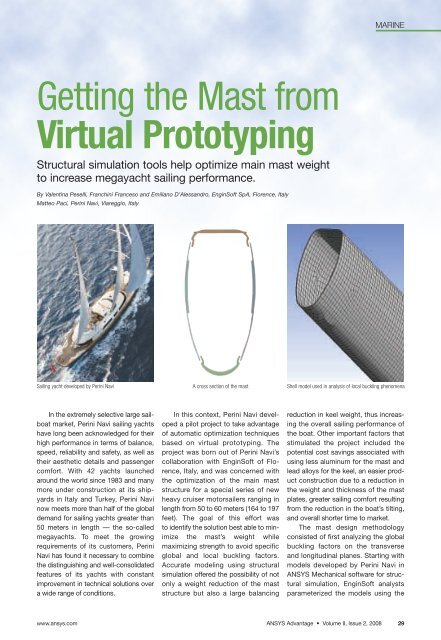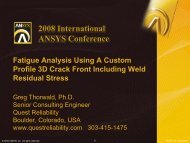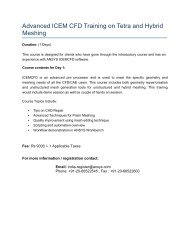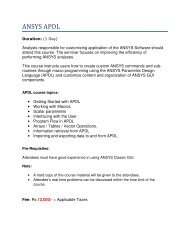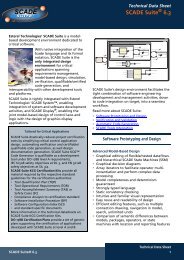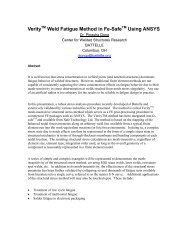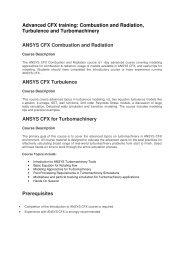Simulation - ANSYS
Simulation - ANSYS
Simulation - ANSYS
You also want an ePaper? Increase the reach of your titles
YUMPU automatically turns print PDFs into web optimized ePapers that Google loves.
Getting the Mast from<br />
Virtual Prototyping<br />
Structural simulation tools help optimize main mast weight<br />
to increase megayacht sailing performance.<br />
By Valentina Peselli, Franchini Franceso and Emiliano D’Alessandro, EnginSoft SpA, Florence, Italy<br />
Matteo Paci, Perini Navi, Viareggio, Italy<br />
In the extremely selective large sailboat<br />
market, Perini Navi sailing yachts<br />
have long been acknowledged for their<br />
high performance in terms of balance,<br />
speed, reliability and safety, as well as<br />
their aesthetic details and passenger<br />
comfort. With 42 yachts launched<br />
around the world since 1983 and many<br />
more under construction at its shipyards<br />
in Italy and Turkey, Perini Navi<br />
now meets more than half of the global<br />
demand for sailing yachts greater than<br />
50 meters in length — the so-called<br />
megayachts. To meet the growing<br />
requirements of its customers, Perini<br />
Navi has found it necessary to combine<br />
the distinguishing and well-consolidated<br />
features of its yachts with constant<br />
improvement in technical solutions over<br />
a wide range of conditions.<br />
In this context, Perini Navi developed<br />
a pilot project to take advantage<br />
of automatic optimization techniques<br />
based on virtual prototyping. The<br />
project was born out of Perini Navi’s<br />
collaboration with EnginSoft of Florence,<br />
Italy, and was concerned with<br />
the optimization of the main mast<br />
structure for a special series of new<br />
heavy cruiser motorsailers ranging in<br />
length from 50 to 60 meters (164 to 197<br />
feet). The goal of this effort was<br />
to identify the solution best able to minimize<br />
the mast’s weight while<br />
maximizing strength to avoid specific<br />
global and local buckling factors.<br />
Accurate modeling using structural<br />
simulation offered the possibility of not<br />
only a weight reduction of the mast<br />
structure but also a large balancing<br />
MARINE<br />
Sailing yacht developed by Perini Navi A cross section of the mast Shell model used in analysis of local buckling phenomena<br />
reduction in keel weight, thus increasing<br />
the overall sailing performance of<br />
the boat. Other important factors that<br />
stimulated the project included the<br />
potential cost savings associated with<br />
using less aluminum for the mast and<br />
lead alloys for the keel, an easier product<br />
construction due to a reduction in<br />
the weight and thickness of the mast<br />
plates, greater sailing comfort resulting<br />
from the reduction in the boat’s tilting,<br />
and overall shorter time to market.<br />
The mast design methodology<br />
consisted of first analyzing the global<br />
buckling factors on the transverse<br />
and longitudinal planes. Starting with<br />
models developed by Perini Navi in<br />
<strong>ANSYS</strong> Mechanical software for structural<br />
simulation, EnginSoft analysts<br />
parameterized the models using the<br />
www.ansys.com <strong>ANSYS</strong> Advantage • Volume II, Issue 2, 2008 29


